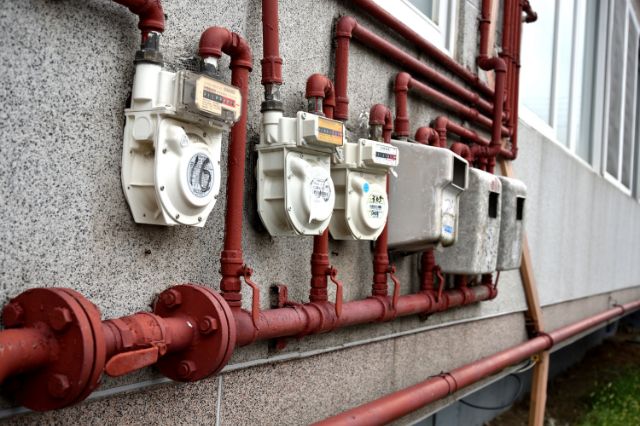As a business owner, managing operational costs is crucial for maintaining a profitable enterprise. One significant expense for many businesses is commercial gas usage. However, with the right strategies and equipment, it’s possible to save more on gas costs and improve energy efficiency.
In this article, we will explore smart ways to minimize your commercial gas expenses, providing expert advice backed by the latest trends and updates in the industry. From energy-efficient equipment to cost-saving strategies and government initiatives, we will equip you with actionable tips to effectively manage your commercial gas costs.
1. Effective Heating and Cooling
Heating and cooling systems account for a substantial portion of commercial gas consumption. By optimizing your HVAC system, you can significantly reduce gas usage. Consider the following tips:
a) Regular Maintenance: Schedule regular inspections and maintenance for your heating and cooling equipment. Clean or replace air filters, check ducts for leaks, and ensure proper calibration of thermostats.
b) Programmable Thermostats: Install programmable thermostats to adjust temperature settings based on occupancy and outside conditions. This prevents unnecessary gas usage during unoccupied periods.
c) Zoning Systems: Implement zoning systems to control heating and cooling in different areas of your commercial space independently. This allows you to optimize comfort levels while minimizing gas consumption.
2. Improving Insulation
Proper insulation is essential for reducing heat loss and gas consumption. Consider the following insulation strategies:
a) Wall and Roof Insulation: Enhance insulation in walls and roofs to minimize heat transfer. Choose high-quality insulation materials with a high R-value for optimal efficiency.
b) Weather Stripping: Inspect doors and windows for air leaks and install weather stripping to seal gaps. This prevents heat loss and reduces the workload on heating systems.
c) Insulated Curtains or Blinds: Use insulated curtains or blinds to provide an additional barrier against heat transfer through windows. This helps maintain a consistent indoor temperature.
3. Optimizing Ventilation Systems
Efficient ventilation is crucial for maintaining indoor air quality. By optimizing your ventilation system, you can minimize gas usage while ensuring a healthy working environment. Consider the following steps:
a) Air Balance: Regularly inspect and adjust your ventilation system to achieve proper air balance. Unbalanced systems can lead to excess gas usage and decreased efficiency.
b) Demand-Controlled Ventilation (DCV): Implement DCV systems that adjust ventilation rates based on occupancy levels. This prevents over-ventilation and reduces unnecessary gas consumption.
c) Heat Recovery Ventilation (HRV): Install HRV systems that recover heat from exhaust air and transfer it to incoming fresh air. This preheats the incoming air and reduces the workload on heating systems.
4. Installing Energy-Efficient Appliances
Upgrading to energy-efficient appliances can make a significant impact on your gas costs. Consider the following strategies:
a) ENERGY STAR Certified Equipment: Choose appliances with ENERGY STAR certification, as they meet strict energy efficiency guidelines. Examples include furnaces, boilers, water heaters, and cooking equipment.
b) Efficient Kitchen Appliances: Upgrade to energy-efficient cooking equipment, such as induction cooktops and convection ovens. These appliances use less gas and provide faster and more precise cooking.
c) Insulated Storage Tanks: If your business requires hot water storage, invest in insulated storage tanks to reduce heat loss. This ensures hot water availability while minimizing gas consumption.
5. Monitoring and Energy Usage Tracking
To effectively manage your commercial gas costs, it’s essential to monitor and track your energy usage. Consider the following strategies:
a) Energy Audits: Conduct regular energy audits to identify areas of inefficiency and pinpoint opportunities for improvement. Hire professional auditors or utilize energy management software to analyze your gas consumption patterns.
b) Submetering: Implement submetering systems to monitor gas usage in specific areas or departments. This provides valuable insights into where energy is being consumed and helps identify potential areas for optimization.
c) Energy Management Systems (EMS): Invest in EMS to automate energy tracking and provide real-time data on gas consumption. These systems allow you to set energy usage targets, monitor trends, and receive alerts for abnormal usage.
6. Employee Engagement and Training
Engaging employees and providing them with proper training on energy-saving practices can significantly contribute to reducing commercial gas costs. Consider the following steps:
a) Awareness Programs: Conduct employee awareness programs to educate them about the importance of energy conservation and cost-saving measures. Encourage employees to contribute their ideas and suggestions for energy efficiency improvements.
b) Training Sessions: Organize training sessions to teach employees about best practices for using gas-powered equipment and systems efficiently. Emphasize the importance of turning off equipment when not in use and using energy-saving features where applicable.
c) Incentive Programs: Implement incentive programs to reward employees who actively participate in energy-saving initiatives. This can include recognizing and celebrating individuals or teams that consistently demonstrate energy-conscious behaviors.
7. Government Incentives and Rebates
Governments often provide incentives and rebates to encourage businesses to adopt energy-efficient practices. Stay informed about relevant programs in your area and take advantage of available benefits. Consider the following:
a) Tax Credits: Research tax credits or deductions available for businesses that invest in energy-efficient equipment or implement energy-saving measures. Consult with a tax professional to ensure you take full advantage of these incentives.
b) Energy Efficiency Programs: Explore energy efficiency programs offered by local utility companies or government agencies. These programs often provide financial assistance, rebates, or low-interest loans for energy-saving projects.
c) Grants and Funding Opportunities: Keep an eye out for grants and funding opportunities specifically targeting energy efficiency initiatives in the commercial sector. These grants can help offset the costs of implementing energy-saving measures.
Conclusion
Effectively managing commercial gas costs requires a proactive approach and a commitment to energy efficiency. By implementing the strategies discussed in this article, including optimizing heating and cooling, improving insulation, optimizing ventilation systems, installing energy-efficient appliances, monitoring energy usage, engaging employees, and leveraging government incentives, you can significantly reduce your gas expenses while contributing to a more sustainable future.
Remember, reducing commercial gas costs is not only beneficial for your bottom line but also helps minimize environmental impact. Embrace these smart ways to manage your commercial gas costs, and watch as your business thrives in an energy-efficient and cost-effective manner.






